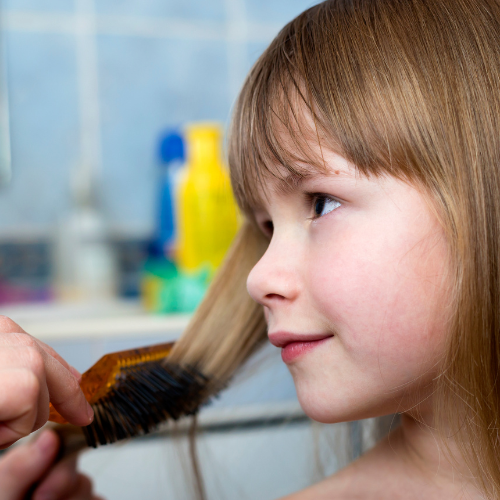Is there a Season for Head Lice?
Is There a Season for Head Lice?

No, lice is NOT seasonal. Head lice is spread all year round but we tend to see a spike of cases during the summer months because children play with different than normal social groups. This leads to the exposure to head lice by a variety of sources.
In addition to the summer playtime, we have sleep away camps and day camps. Just think about all of the opportunities of head-to-head contact your children can have during this time. This is why it is so important to talk to them about personal space, head to head contact and why sharing brushes and hair accessories should be avoided. Kids are so busy playing that they do not realize they itch.
The beginning of a new school year always starts with an epidemic of head lice. The school nurse will discover it in late August or early September as well as in January when the students have returned from the summer and holiday breaks. The cases are often larger and more likely to be contagious.
At this point you are probably asking yourself, “What about the winter months?” Lice thrive off of our blood and body temperature. Since our body temperature does not change throughout the year, the rate of infestations do not change. “My kids do not go outside to play.” Yes, our children might not go outside and play as much like they do in the summer months, but keep in mind they do go to school. We send them to school all bundled up in hats, scarves and jackets to stay warm and in school they hang their coats, backpacks and all their winter accessories really close to each other. Your daughter may like her friend’s beanie hat and she decides to try it on. Even though anything other than head-to-head contact falls under a 1% chance of contracting lice the chance is still there. If a child gets cold and they decide to hug to warm themselves up, they have just touched heads. BOOM your daughter now has lice. It is that simple, that quick and that easy for a louse to transfer.
Based on research conducted by sciencedaily.com, head lice cause between 12 million and 25 million infestations each year, mostly in children under the age of 12. It is also seen more in girls than boys. Perhaps because boys play differently than girls, they wrestle and share nap time on the floor. Girls on the other hand share brushes and barrettes as well as braid and comb each other’s hair.
Children can get head lice anytime throughout the year if they come in contact with another person with lice. Parents this is why it is so important to communicate with our kids and educate them about head lice and how to prevent it.
www.sciencedaily.com



